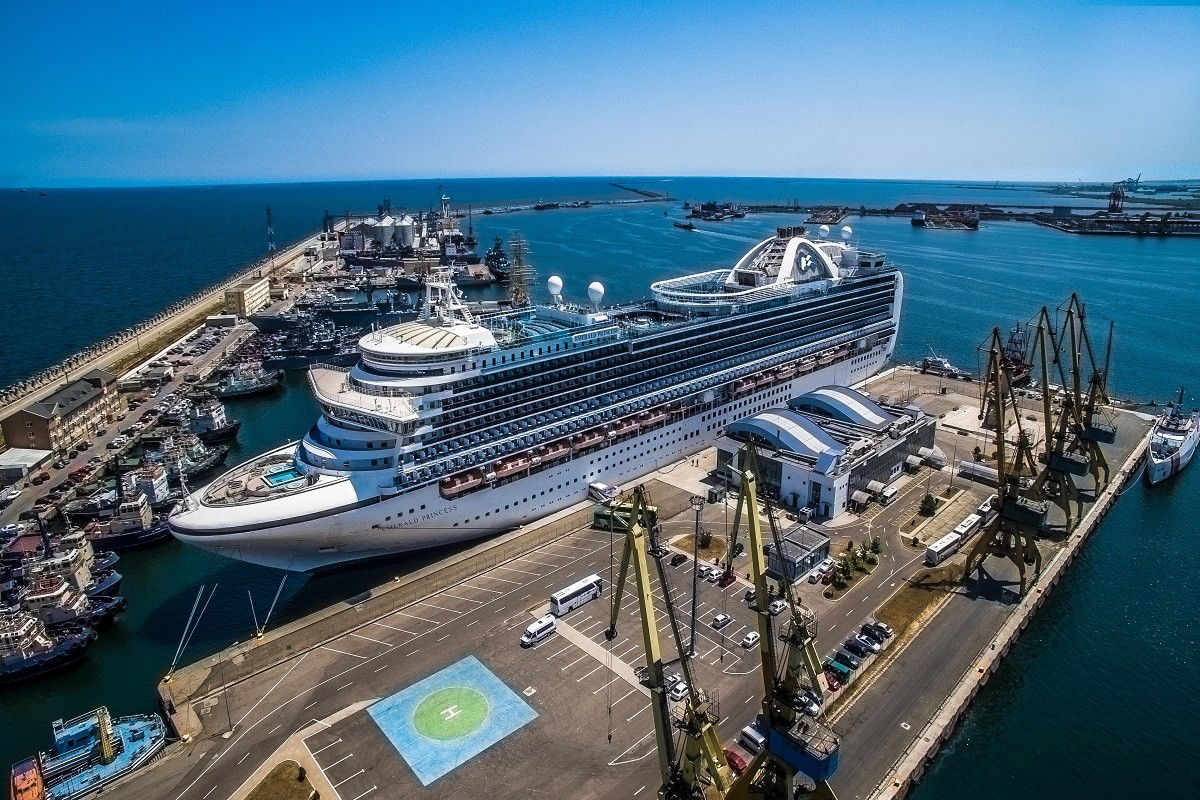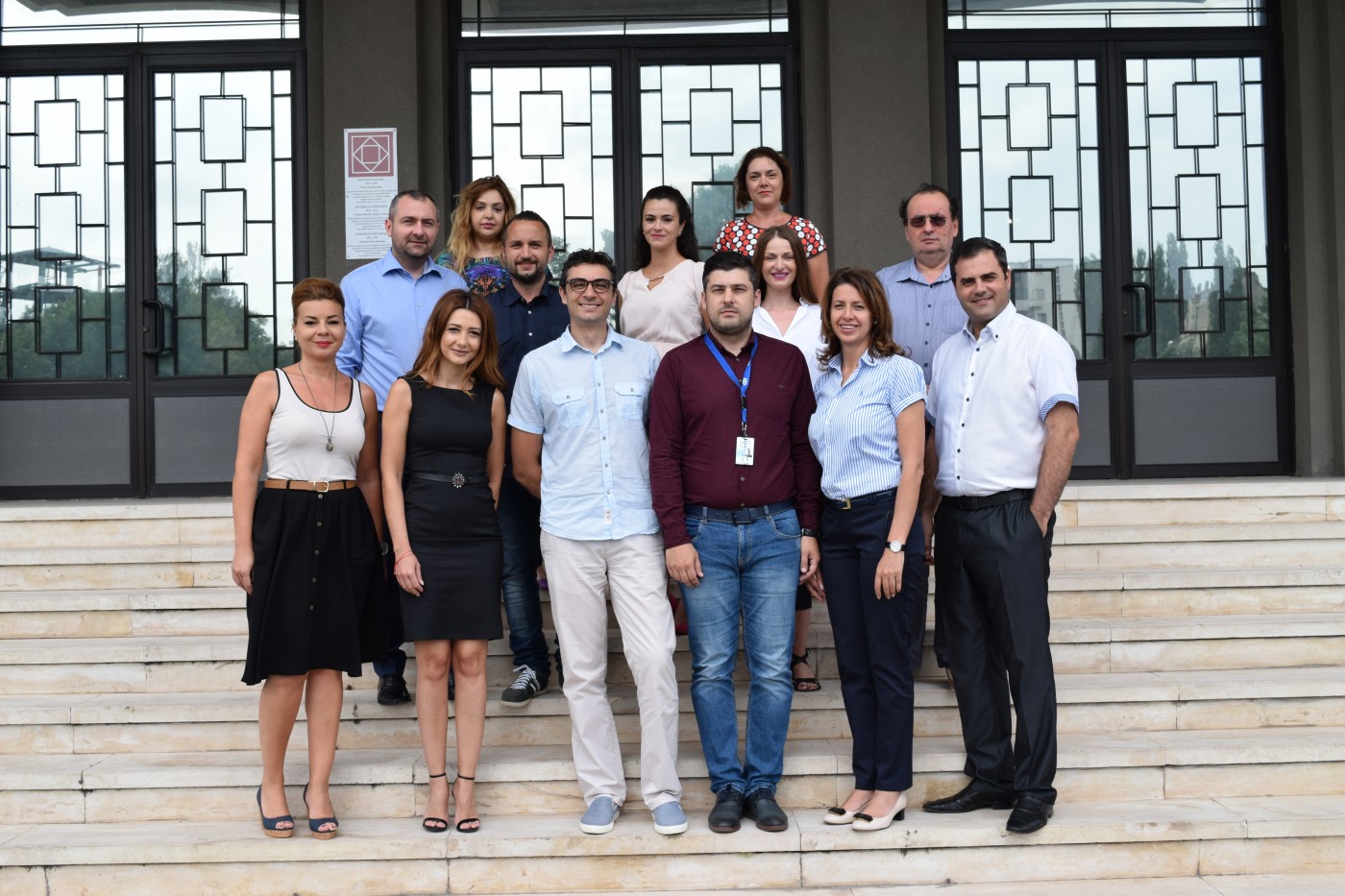29 July 2016
This month we take you to the eastern borders of the European Union. Located at the Black Sea coast of Romania, the Port of Constantza has a rich history. It functions as an important hub in the region and offers a wide variety of services. Let’s have closer look at this interesting port!
ESPO: Can you briefly tell us about the Port of Constantza? What are its main characteristics and challenges?
Port of Constantza: The port and city of Constantza are closely interconnected. The ports’ history dates back to the 6th century BC, yet the port’s modern period started in October 1896 under King Carol I, when the first grain silos were built and linked by rail to the rest of Romania. Nowadays, intermodal facilities link the port to seven countries and more than 50 million inhabitants. The port has a natural connection with the Danube Basin through the Danube-Black Sea Canal.
The port is fully intermodal, offering transport possibilities by road, rail, IWW, a pipe network and air cargo. IWW represents about 25% of throughput, road represents about 35% and rail approximately 30%.
The Port of Constantza’s theoretical capacity is about 90 million tons p.a., which is based on 140 berths (32 km of key walls), with natural depths of 19 meter and modern equipment.
Additionally, the port has ample space for expansion by land reclamation (up to 1,000 ha) within its existing breakwaters.
The main challenge of the port is to continuously adapt to larger ships and new types of cargo by upgrading existing port facilities to the level needed as a TEN-T core port. The Administration is therefore proactively pursuing new links with the Caspian region in order to attract new cargo flows as well as new types of cargo.
ESPO: The Port of Constantza functions as a hub for the Black Sea Region and a distribution centre for Central and Eastern Europe. Could you briefly describe the main traffics in your port? What are the main challenges related to them?
Port of Constantza: Constantza is a multipurpose port, equipped for many types of cargo: dry and liquid bulk, containers, general and project cargo, Ro-Ro and passengers. In the past five years, the port has become the major Eastern gateway for agro-related business to and from Romania, Moldova, Northern Bulgaria, Serbia, Croatia and Hungary. As such, it reached about 19 million tons (33% of throughput) in 2015.
As mentioned above, the major challenge for the port is attracting additional volumes, especially in terms of containerised goods through its three terminals with a total capacity of 1.5m TEUs p.a.
Furthermore, the Administration is negotiating to attract businesses such as green energy, recycling, manufacturing and oil-related processing businesses.
ESPO: The Port of Constantza is located at the crossroads of the trade routes linking the markets of the landlocked European countries to Transcaucasia, Central Asia and the Far East. In 2013, China revealed the “One Belt, One Road” initiative, containing two dimensions. The first is the Silk Road Economic Belt, which connects China to Central Asia, West Asia, and Europe via land. The second one is the Maritime Silk Road, which links China to South East Asia, the Middle East, and Europe via sea. How could this initiative be of importance for the Port of Contantza?
Port of Constantza: The maritime dimension is a major opportunity for us and this is why we are extending our links to the Caspian Basin in order to attract volumes not only from China but from Iran as well. Romanian and Bulgarian ports can leverage the advantage of being direct entry points into the EU, which in turn may represent good opportunities for MoS projects linking the East and West Coasts of the Black Sea.
Together with the Romanian rail and other partners, we are particularly promoting the land corridor from the Azeri ports to the Georgian ones.

ESPO: The Port of Constantza is a destination for many Danube and also maritime cruise routes. How is this business evolving? What are the main challenges?
Port of Constantza: Unfortunately the political situation in the Black Sea and recently in Turkey affects the maritime passenger cruise sector, but once again the Danube can save the day! River cruises have potential and we are coordinating with cruise agents and the Danube and Canal Authorities to improve the infrastructure and to align the fees with the new business environment.
ESPO: The Port of Constantza is a core port in the Trans-European Transport Network. How has being a core port been of benefit to your port?
Port of Constantza: The plan for the upcoming years is based on 3 levels, spread out in 3 phases. Firstly, the Port Authority looks at improving and upgrading the existing infrastructure and aligning it with the needs of a TEN-T core port. Secondly, it tries to increase modern capacity with investments leveraging EU funds from CEF and the Major Infrastructure Operational Program. Last but not least, for those projects that are bankable, the Authority is looking for private partners to co-invest under the facilities offered by the New Infrastructure Junker Plan.
Based on a recently completed Master Plan, these levels are phased out in 3 steps with the first one covering the current EU budgetary period until 2020.
ESPO: What are the main investment projects for the Port of Constantza for the upcoming years?
Port of Constantza: We already obtained about EUR 14 million from the last CEF Call and we are preparing projects for the next Call. Moreover, we are preparing about EUR 250 million of projects to be submitted until 2017 for the Major Projects Program.
It is our wish to be able to say in a couple of years that the Port of Constantza, being both a maritime and river port, is one of the TEN-T ports that responded to change in terms of modern logistic operations.
ESPO: As from 1 May 2016, the Union Customs Code (UCC) has come into force. One of the aims of the UCC is to simplify customs rules and procedures and facilitate more efficient customs transactions as well as complete the shift by customs to a paperless and fully electronic and interoperable environment. How does the Port of Constantza assess the potential benefits of this new piece of legislation for ports?
Port of Constantza: As many of our ESPO colleagues will testify, “Customs Authorities” everywhere usually have the custom of creating a bottle neck, mainly through procedures and red-tape, which vary a lot from country to country. This creates advantages for some ports, but it disadvantages others. A unified Code will create a true level playing field for all.
We, on our part, are coordinating with the Romanian Naval Authority that is in charge of the Single Window Project and at the same time, we are building for ourselves a Port Community System platform, open to all stakeholders.
ESPO: To get goods to the desired destination, a good access between the port and the hinterland is indispensable. Could you briefly tell us how the port is connected with the hinterland?
Port of Constantza: As mentioned earlier, the Port of Constantza is connected to all types of transport, of which the Danube River (through the Danube-Black Sea Canal) is the most important one. The main road connection is the A2 highway ensuring a 2-hour non-stop drive to Bucharest; additionally, a modernised railway links the port to the major rail lines of the country and from there onwards with the hinterland. The pipes from the Oil Terminal are interconnected with the national network, while two airports within a radius of 25 km and our own heliport provide quick transfers for light and heavy air cargo.
ESPO: What are the Port of Constantza’s main environmental policies?
Port of Constantza: The already accepted CEF project “Protect” includes the building of an on-shore ship waste collection facility, which together with 5 modern multipurpose vessels for different environmental tasks, will bring Constantza at the same foot with other ports of similar size.
We have already prepared the “Constantza Green Port Project” to be submitted to the next CEF Call. The project is aimed at developing a permanent environmental management system that will decrease the negative impact of port activities.
In parallel, we are negotiating with strategic investors concerning several recycling projects and the production of green energy, of which the port will be the main buyer.
ESPO: ESPO is a partner of PORTOPIA, an FP7 project that aims to measure port performance. What is your approach for measuring the port’s performance?
Port of Constantza: Measuring performance and comparing it with benchmarks helps establishing a real and objective image that improves port management. As such, this tool is more than welcomed in the decision-making process.
Furthermore, Constantza Port is already an active partner in the Rapid Exchange System and we intend to build a dynamic tool that benchmarks our activity against the European macroeconomic climate derived inter alia from traffic volumes on the continent.
Related documents
No attachments.

